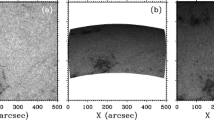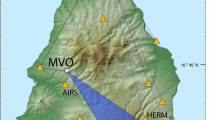Abstract
—A comparison of isoplanatic angles θ 0 derived from (1) balloon-borne in situ measurements of the index of refraction structure constant (C n 2) profiles and (2) ground-based optical measurements of stellar intensity fluctuations using an isoplanometer is presented. Concurrent data taken over a six-day period in the spring of 1986 show reasonably good agreement between the mean values determined by the two methods. Comparisons in light of meteorological conditions suggest an isoplanatic angle behavior consistent with the Kelvin-Helmholtz instability where the best correlation was found between the optically-measured isoplanatic angle and the layer-averaged wind shear. Differences between the two measurement methods are largest for isoplanometer azimuth angles perpendicular to the balloon trajectory and for lower values of mean shear.
Similar content being viewed by others
Author information
Authors and Affiliations
Additional information
Received November 1998, accepted January 1999
Rights and permissions
About this article
Cite this article
Roadcap, J., Murphy, E. Comparison of Isoplanatic Angles Derived from Thermosonde and Optical Measurements. Pure appl. geophys. 156, 503–524 (1999). https://doi.org/10.1007/s000240050310
Issue Date:
DOI: https://doi.org/10.1007/s000240050310




